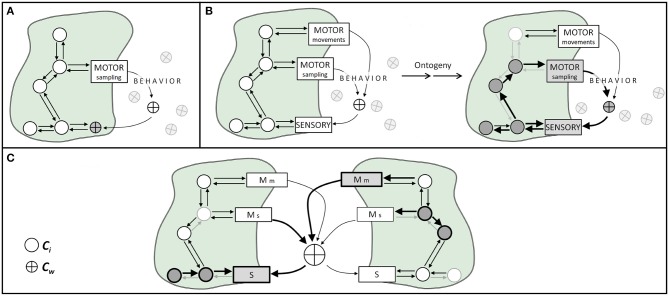Figure 1.
Illustration of body-world coupling, sensorimotor mechanisms, and the ontogeny of social cognition. Circles represent mechanisms' components internal to the organism (Ci), and crossed circles depict world components (Cw). Arrows represent causal effects between components. (A) In non-sensorimotor body-world couplings, an organism's motor activities capture world's components and makes them interact with body components. (B) In sensorimotor body-world couplings, through active motor sampling activities (e.g., sniffing, touching, fixating) the organism dynamically brings world components onto sensory surfaces. During ontogeny, the occurrence (or not) of specific sensorimotor activities produces plastic changes in body components, represented here as weighted arrows and circles. (C) Social cognition as a process grounded in sensorimotor coupling. World components relevant to sensorimotor coupling could well be stimuli produced by another organism, such as physical stimuli resulting from communication processes, and different agents coupled with shared world components can lead to social cognitive phenomena. This kind of sensorimotor coupling might entail different plastic processes within each organism (represented as different weighted arrows inside each agent). S, sensory; Mm, motor actions for movement; Ms, motor actions for sampling.

